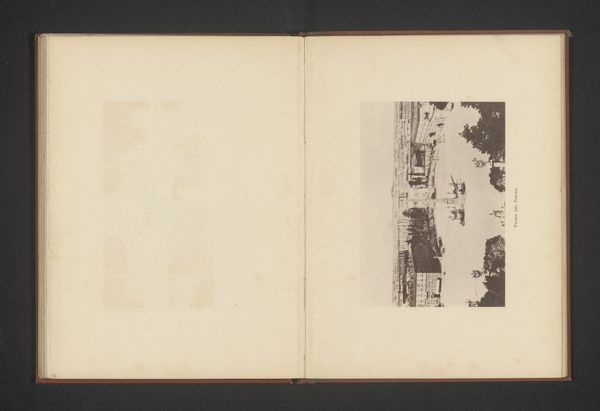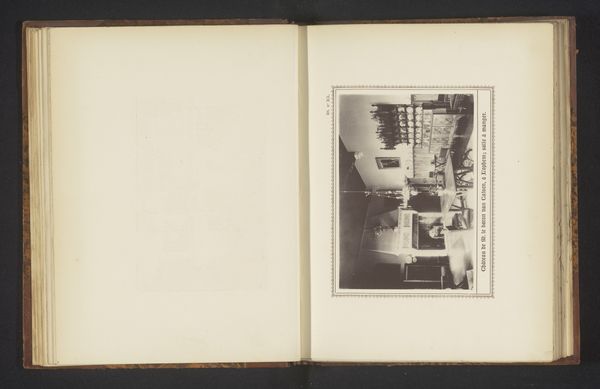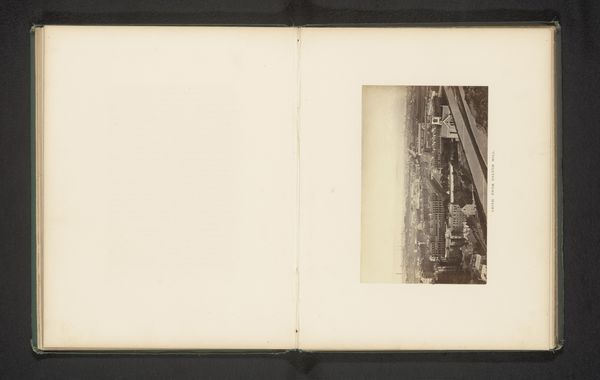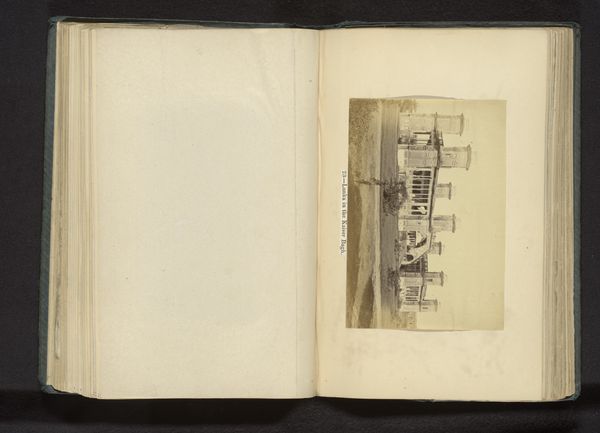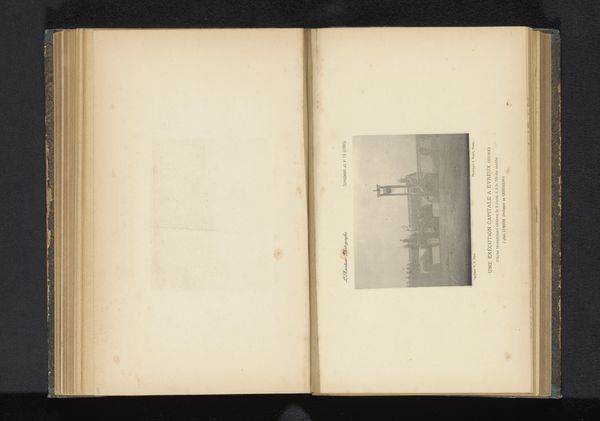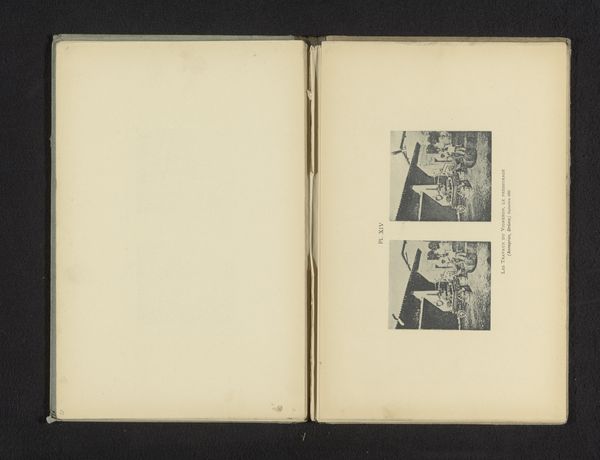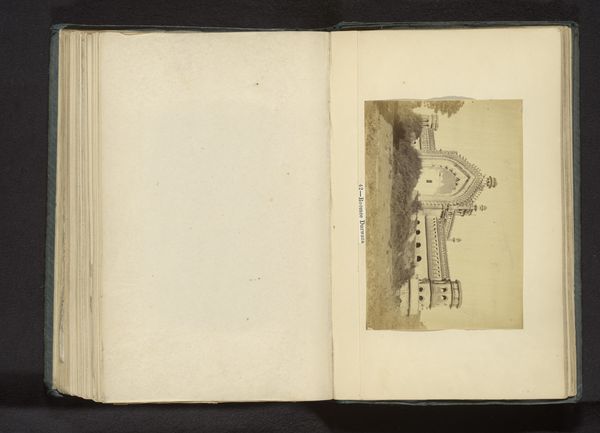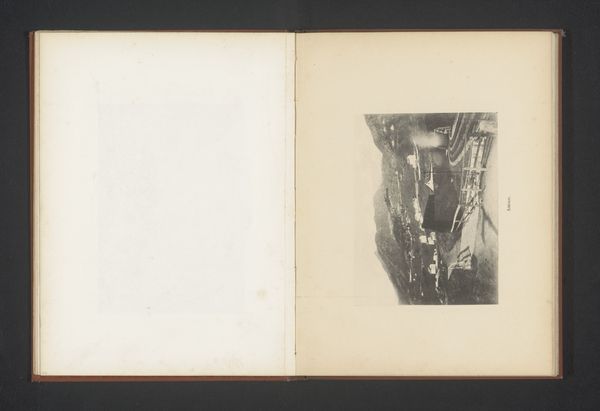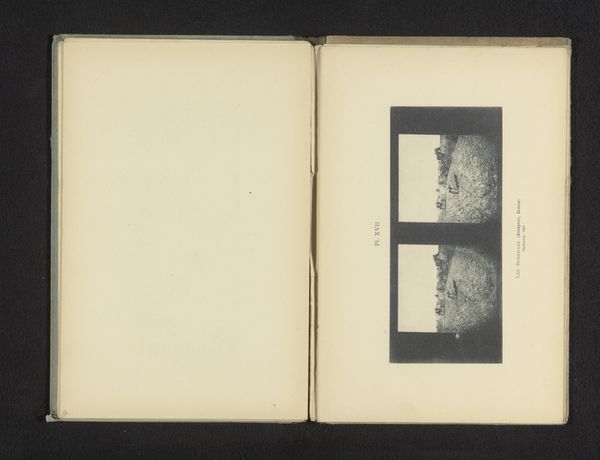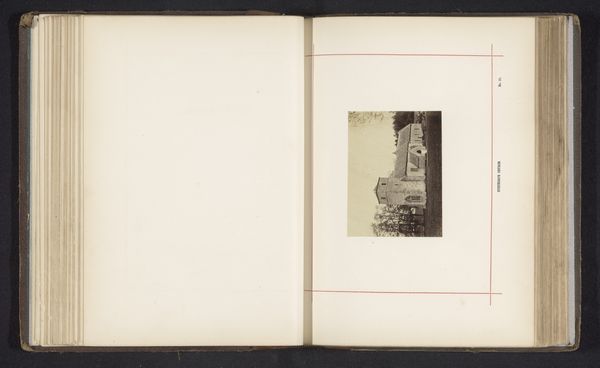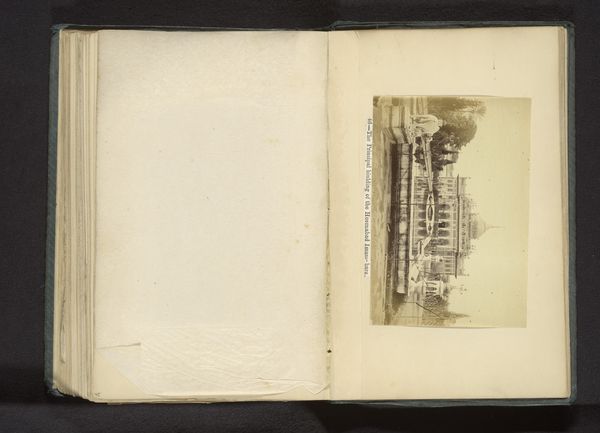
print, photography, gelatin-silver-print
#
aged paper
#
homemade paper
#
paper non-digital material
#
paperlike
# print
#
sketch book
#
paper texture
#
photography
#
personal sketchbook
#
folded paper
#
gelatin-silver-print
#
thick font
#
cityscape
#
paper medium
Dimensions: height 111 mm, width 167 mm
Copyright: Rijks Museum: Open Domain
Curator: We’re looking at a page from a sketchbook, featuring a photographic print of Lyon by Adolphe Louis Donnadieu, sometime before 1892. It's a gelatin-silver print. Editor: My immediate impression is that of a hazy dreamscape. The inverted image on the paper possesses an ethereal, almost ghost-like quality. The texture of the paper itself really speaks to the history held within its fibers. Curator: Precisely. Consider how the stereoscopic presentation, even in negative, invites a depth of perception—two slightly offset images converging to create a three-dimensional effect. This manipulation of perspective offers a new vantage of the urban landscape, deconstructing traditional modes of seeing. Editor: And think about the process—the labour inherent in early photographic techniques. The coating of the gelatin silver emulsion, the exposure, the meticulous development—these steps highlight the manual nature of early photography and are embedded into the print we’re seeing. Curator: The formal composition, then, emphasizes geometry. Bridges as arcs contrast with the rectilinear forms of the buildings. This creates a visual dynamic between the man-made and the natural, playing out across the picture plane. The very notion of "cityscape" here becomes an exploration of spatial relationships and the structuring of urban space. Editor: Looking closely, one can see notes around the image's border. Someone directly engaged with the image, recording its reception. Also the sketch of what looks to be some vegetation near the photo further blurs lines of the technical and the hand-made. The print ceases to be a mere depiction and instead becomes a site of creative engagement, inviting questions about art and science. Curator: So we see the photograph not just as representation, but as a material object embedded within a nexus of intentionality and chance, all of which challenges our presumptions. Editor: Right—I’m reminded how much early photographic processes hinged on both chemical and social forces. Curator: A perfect encapsulation—thanks for contributing your thoughts. Editor: Likewise! Examining art across different material lenses has revealed new dimensions of its social and functional significance.
Comments
No comments
Be the first to comment and join the conversation on the ultimate creative platform.
